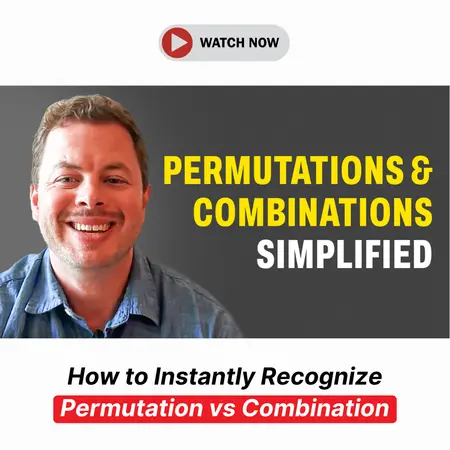Events & Promotions
|
|

GMAT Club Daily Prep
Thank you for using the timer - this advanced tool can estimate your performance and suggest more practice questions. We have subscribed you to Daily Prep Questions via email.
Customized
for You
Track
Your Progress
Practice
Pays
Not interested in getting valuable practice questions and articles delivered to your email? No problem, unsubscribe here.
- Nov 20
07:30 AM PST
-08:30 AM PST
Learn what truly sets the UC Riverside MBA apart and how it helps in your professional growth - Nov 20
01:30 PM EST
-02:30 PM IST
Learn how Kamakshi achieved a GMAT 675 with an impressive 96th %ile in Data Insights. Discover the unique methods and exam strategies that helped her excel in DI along with other sections for a balanced and high score. - Nov 22
06:30 AM PST
-08:30 AM PST
Let’s dive deep into advanced CR to ace GMAT Focus! Join this webinar to unlock the secrets to conquering Boldface and Paradox questions with expert insights and strategies. Elevate your skills and boost your GMAT Verbal Score now! - Nov 22
11:00 AM IST
-01:00 PM IST
Do RC/MSR passages scare you? e-GMAT is conducting a masterclass to help you learn – Learn effective reading strategies Tackle difficult RC & MSR with confidence Excel in timed test environment - Nov 23
11:00 AM IST
-01:00 PM IST
Attend this free GMAT Algebra Webinar and learn how to master the most challenging Inequalities and Absolute Value problems with ease. - Nov 24
07:00 PM PST
-08:00 PM PST
Full-length FE mock with insightful analytics, weakness diagnosis, and video explanations! - Nov 25
10:00 AM EST
-11:00 AM EST
Prefer video-based learning? The Target Test Prep OnDemand course is a one-of-a-kind video masterclass featuring 400 hours of lecture-style teaching by Scott Woodbury-Stewart, founder of Target Test Prep and one of the most accomplished GMAT instructors.
Kudos
Bookmarks
B
Be sure to select an answer first to save it in the Error Log before revealing the correct answer (OA)!
Difficulty:
 85%
(hard)
85%
(hard)
Question Stats:
50% (02:01) correct 50%
(01:57)
wrong
50%
(01:57)
wrong  based on 335
sessions
based on 335
sessions
History
Date
Time
Result
Not Attempted Yet
If x and y are both prime, is x*y = 323?
(1) x is the first prime number after 18
(2) y is the last prime number before 180
Kudos for a correct solution.
(1) x is the first prime number after 18
(2) y is the last prime number before 180
Kudos for a correct solution.
Kudos
Bookmarks
Bunuel
As we know that y and x are prime and if xy = 323 than we should have pair of integers 17 and 19
1) from this statement we know that x is 19 but know nothing about y so Insufficient
2) after a little checking we know that y = 179 and we know that product of 179 and another prime can't be equal 323 so Sufficient
Answer is B
adityadon
Joined: 18 Mar 2014
Last visit: 07 Oct 2024
Posts: 204
Given Kudos: 177
Location: India
Concentration: Operations, Strategy
Schools: INSEAD Jan '17 NTU '17 NUS '17 (D) Rutgers '18 SMU '16 (A) Weatherhead '18 (S) Broad '17 (M)
GMAT 1: 670 Q48 V35

GPA: 3.19
WE:Information Technology (Computer Software)
Schools: INSEAD Jan '17 NTU '17 NUS '17 (D) Rutgers '18 SMU '16 (A) Weatherhead '18 (S) Broad '17 (M)
GMAT 1: 670 Q48 V35

Posts: 204
Kudos
Bookmarks
This is Yes/No type DS question. Our end answer should be Yes/No.
according to Statement 1 - X=19 but we dont know any thing about Y so insufficient
According to statement 2 - Y = 179 but 179*sny prime number is not equal to 323 , so we dont need to care about value of X here . So , X*Y is not equal to 323 - Sufficient
Answer is B
according to Statement 1 - X=19 but we dont know any thing about Y so insufficient
According to statement 2 - Y = 179 but 179*sny prime number is not equal to 323 , so we dont need to care about value of X here . So , X*Y is not equal to 323 - Sufficient
Answer is B














